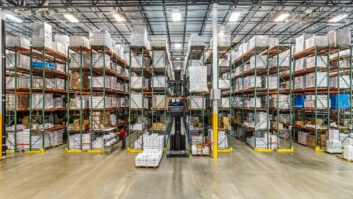Several years ago, leaders from the professional sales rep association, IPRO, presented a class at CEDIA EXPO titled, How to Get More From Manufacturer Representatives. The idea was to help custom integrators benefit from greater interaction and contact with representatives in the field. To our surprise, most of the people that showed up for the class were manufacturers seeking to answer this question themselves. Obviously, there are multiple points of interest regarding this subject.
This article is the first of three addressing key issues regarding todays manufacturers representative, including ideas for effectively utilizing manufacturers representatives. I will examine these issues from multiple points of view, including from the interests and views of manufacturers, dealers, manufacturers representatives, and various industry organizations.
Many members of the residential installation community benefit from enhanced market education and intelligence, as well as problem prevention and mediation that are provided by the best representative firms today. Others are unaware of those benefits or even how to tap into them. How effectively one profits from the contributions of representatives is proportional to understanding the sales rep business model.
The Rep Model
Ironically, the extent to which one even understands the representatives business model in our market falls greatly on the shoulders of the representative community itself. Given my level of immersion (as one of my dealers put it recently) in our industry over the last few years, it is appropriate to address this topic from the community of input in which I am privileged to be participating.
For more than a year now this column has covered various topics pertinent to our industry. My commitment to Residential Systems readers is to offer a new perspectiveas a manufacturers representativeregarding issues and trends within our industry. To date, however, these columns have dealt with issues beyond those of representatives.
Reps Never Cost More Than Direct Sales
One of the keys to understanding the representative model is that it is the manufacturers sales organization, not a middleman operation. For some time, IPRO has been engaging manufacturers in this dialogue. The recently released book titled Outsourcing the Sales Function, by Erin Anderson and Bob Trinkle, is the basis for much of our discussion. The book covers several years of data from companies as large as Motorola, and includes a cost of sales calculator CD ROM. Its conclusion provides empirical data to show that while the difference in the cost of sales diminishes as volume of sales increases (between the direct and representative sales models), at no point does the representative organization cost more than direct sales.
Because this point is not fully understood among some manufacturers, dealers, and organizations entering our market, were seeing cases of a virtual doubling of sales costs as staff are hired for direct sales roles in addition to outside sales representatives. When one doesnt know what one doesnt know about a new market, many would contend its more profitable to piggy back with someone who is already in the market, supplementing that with specialized trainers as needed for new product knowledge and support.
Improving Your Bottom Line
According to the aforementioned book, most manufacturers accounting departments evaluate cost of sales of direct sales personnel vs. contracted representatives as a comparison between direct sales personnel compensation vs. commissions paid. Invariably, this does not include the administrative, real estate, auto, insurance, and other support staff costs affiliated with the total sales cost in the analysis. In other words, the representative firm is a complete business, including the staff and other physical overhead alleviated by manufacturers having to invest in the same.
Understanding this fact will greatly benefit your bottom line and speed of market deployment. Also, seeing todays representative model as a more cost-effective outsourced sales force extending the reach of a manufacturers connection with the market may allow more to see this is not an adding of cost, but rather a substitution of sales costs which would be incurred by each manufacturer to do the same.
Nationally, representatives are running businesses comprised of mostly personnel, travel, and office personnel costs paid for by slightly more than a five-percent gross margin. While multiple product lines are necessary to make this model work, efficiency is the main ingredient motivating principals to continually work smarter.
Andrew Ard is a past president and current board member of IPRO, and is a former board member of CEDIA and current chair for CEDIAs Associate and Affiliate Members Council.








